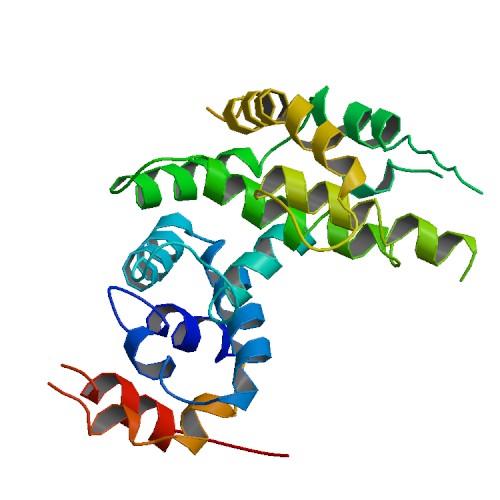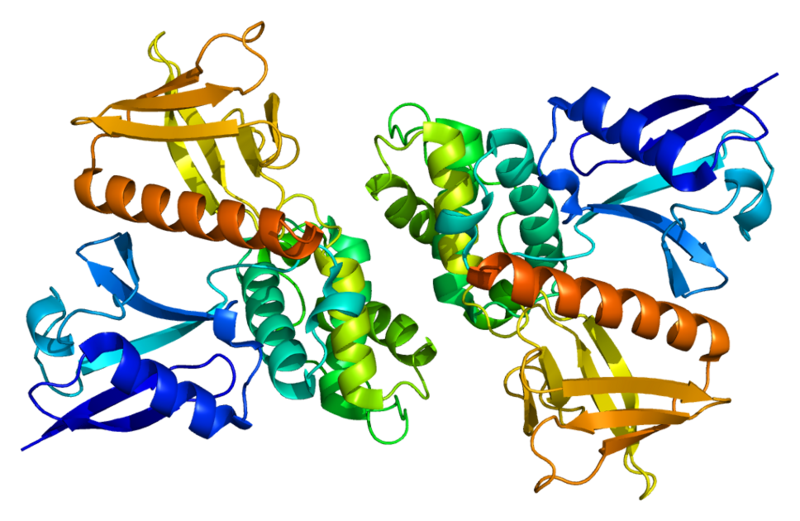If any of you are reading Yvonne Foong, you are well aware that she has a condition called Neurofibromatosis type 2. In simple terms, this condition causes benign tumours to grow around her auditory nerve.
Neurofibromatosis (NF) is a genetic disorder that affects the nervous system. Patients with this condition develop benign tumours around their nerve, which can be harmless or cause serious damage by compressing neighbouring nerve or other tissues and affecting their function. Affected people often undergo repeated surgeries to remove tumours and suffer complications as a result (deafness, blindness, loss of balance, etc.)
Classification of Neurofibromatosis
There are three types of Neurofibromatosis, namely Neurofibromatosis type 1, Neurofibromatosis type 2 and Schwannomatosis. Type 1 is caused by mutation at chromosome 17; type 2, mutation at chromosome 22; Schwannomatosis is caused by mutation in both Chromosome 17 and 22.
Molecular biology and pathology of Neurofibromatosis
I am majoring in molecular bioscience in university, so I am in a position to let you understand the disease from a molecular perspective. Furthermore, nobody has blogged about what happened in the cells that forms tumour.
I have told you that NF can be traced back to genetic mutation at the chromosome. First of all, a question remains to be answered. What does a gene do and how it causes diseases?
DNA, the genetic material for humans, is contained in chromosomes. A gene is a specific region in DNA that codes for protein (sometimes RNA). Whether a gene codes for a protein or RNA, we shall call it the product of the gene. It is the gene product that carries out the function inside our body. Since a gene codes for a product, there is a flow of information in the process, any error in the information will be carried forward. So, you get a dysfunctional protein (in most cases) from a mutated gene.
In NF1, the gene affected codes for neurofibromin 1 while in NF2, the gene affected codes for neurofibromin 2. Both neurofibromins are proteins important for tumour suppression.
But.... haven't we forgotten that all of us carry two copies of each chromosome? In other words, most of us carry two copies of any one gene. Many versions can exist for a gene, due to the differences in DNA sequence. Since a gene is represented twice in our body, we can have at most two versions of a gene. Several combinations can arise, we can either carry two working copies, only one working copy or none at all.

Ribbon diagram of neurofibromin 1
Both type 1 and 2 NF shows dominant inheritance. In other words, having one copy of the gene that gives NF will give the disease. The gene that gives NF is actually, a defective version of the normal gene. But didn't the affected person have one working copy? Isn't this one working copy enough to stop the disease? Why is this the case?
To find out what's the effect of having only one normal copy of a gene, we must understand what its gene product do. Remember, the gene only codes for the instruction to make protein. I have said earlier, it is the protein (the gene product) that does the job. What happen is, the gene on both chromosomes will be expressed to make many copies of gene products, each chromosome contributes half of the total. For some traits, you only need one working copy of the gene to give the normal trait, but not for NF. In NF patients with only one normal gene, you expect half of the proteins will be normal and the other half will be dysfunctional. For patients with no working copy of the gene, needless to say but their symptoms will be worse.
So we turn our attention to the protein made from the gene. In NF1, the protein affected is neurofibromin 1, an important tumour suppressor protein. For NF2 the protein affected is neurofibromin 2 (also named Merlin, schwannomin), a structural protein and also a tumour supressor protein. [The structural role of Merlin actually has nothing to do with its tumour supressor role, don't believe Wikipedia!] Tumour supressor proteins, as their name implies, act to prevent a cell from growing uncontrollably that leads to tumour formation. They function by interacting with other proteins in signalling pathways inside the cell.

Ribbon diagram of neurofibromin 2
You can imagine proteins in the signalling pathways as those mini messengers, each carrying a message telling the big cell "what to do next". Tumour supression proteins inhibit these signalling proteins from carrying out their function, so the cell will not grow and divide when it's not supposed to. Having only half of the tumour supression proteins working is just like having not enough police to stop a demanding protest, so the cell proceeds to grow and divide because signalling pathways become unchecked.
Unchecked signalling pathways causes the cell to grow and divide, uncontrollably. Note that one cell divides giving two new cells, and these new cells continue the successive cycles of growth and division giving many many cells. The result is tumour.
Inheritance of Neurofibromatosis
The dominant nature of NF means that, if you have NF and have children, you can expect your children to have the disease, though not all. Still wondering why NF is dominant? Think about the consequence of having only half of the proteins working or something that the defective protein do. In NF, it is the latter that is the case, this condition is called dominant negative by geneticists/biochemists. The pattern of inheritance (dominant/recessive) of a condition can give a clue of what the gene product do, and how it give rise to the condition :)
The message
To find out more about the life of a NF patient, do visit Yvonne Foong, and support her by donation. She is raising funds to combat this lifelong condition; she needs your help, of course.
No comments:
Post a Comment